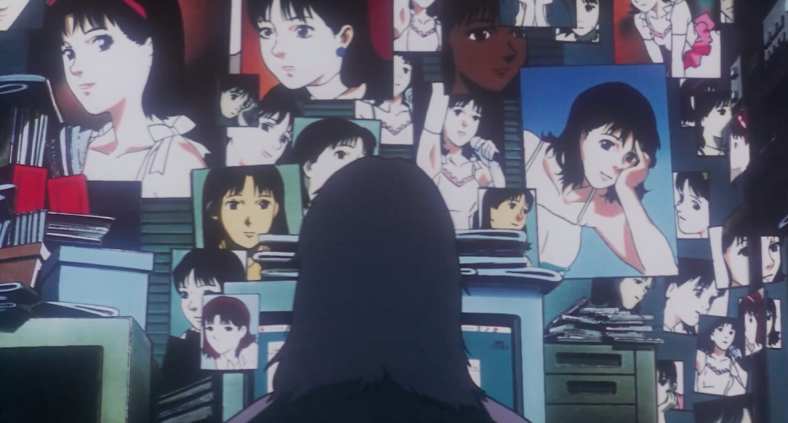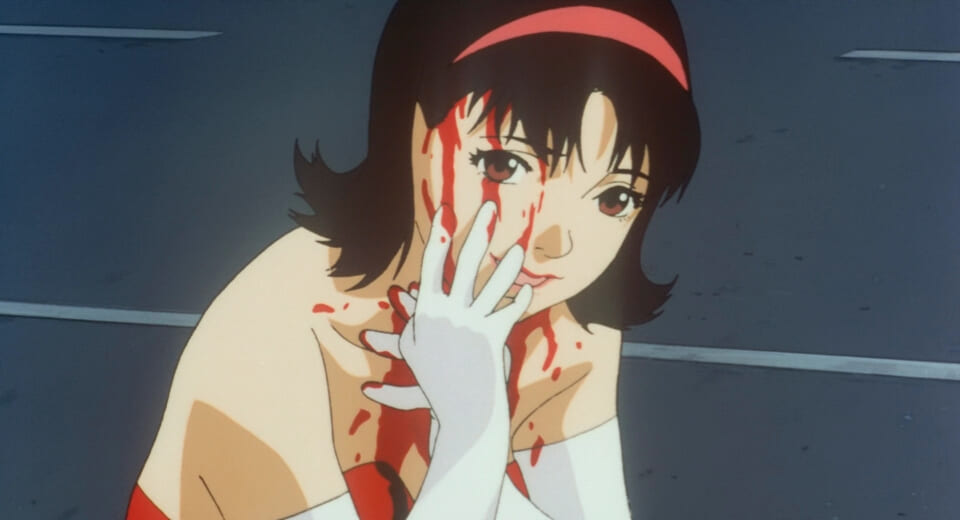“If you were to change I don’t know what I would do”: Conversations on Obsession in ‘Perfect Blue’ [Abibliophobia]

Book-to-film adaptations are finicky things. No one adaptation pleases every person in its audience; to do so is nearly impossible. But the best of them happen when the two media are more in conversation with each other than trying to one-up or faithfully mirror. Mirrors have always been about distortion, after all. We’ve never truly seen ourselves — only what the world around us reflects.
One of the best book-to-film conversations is that of Perfect Blue. Satoshi Kon’s film based on Yoshikazu Takeuchi’s novel, Perfect Blue: Complete Metamorphosis is a pitch-perfect exercise in digging into the heart of an artwork and presenting a new angle without lessening the source’s impact. More than that, though, the two build on each other in such a way as to more deeply explore the core theme of obsession that festers at the heart of them both.
Also Read: Dewey’s Death in ‘Scream’ Was 2022’s Most Tragic Horror Moment
There are elements of both works that have only grown more relevant with the passing of time. The closer we get to technological connection, the more harrowing Kon’s moments of analysis of the Internet’s impact on fan-to-artist relationships become. The more prevalent parasocial relationships built as a result of the increase in social media usage — and the necessity for artistic success — become, the more terrifying Takeuchi’s novel.
Without giving too much away, both explore the tensions of a Japanese pop idol embarking on a career transition — in the case of the novel, from an “innocent” image to one that is more risqué; in the film’s case, from pop idol to actress — and encountering the dangers of obsessive and scandalized fans while reckoning with the challenge of conflicting self-image.
While there are similarities between the way Western audiences interact with celebrities and develop a sense of idealization for people they may never even meet and the Eastern concept of pop idols, there are just as many important distinctions.
Also Read: Why ‘The Square’ Is The Best Horror Film About Art
Western audiences are no strangers to making demands of the artists they claim to so deeply admire, but pop idols in countries like Japan and Korea are a whole other ballgame. Their images are often built on the idea that you could enter a relationship with them, and often fans’ concerns are elevated above the needs of the artists. Pop idols have no-dating clauses written into their contracts, and nearly every element of their image is controlled by the company that builds them.
Female pop idols in particular, as Perfect Blue’s Mima Kirigoe is, are strictly managed and more harshly punished for transgressions real or imagined than their male counterparts. They are also more often and more intensely sexualized, nearly regardless of age. Misogyny is borderless. Whether they want to be or not, female pop idols are often dressed in outfits so skimpy they end up frequently pulling them down on stage to avoid scandal.
The conversation at the heart of the adaptation between novel and film for Perfect Blue feels rich and unique precisely because the interest seems to lie primarily in interrogating the way fan and industry views of pop idols foster a sense of obsessive connection. Kon isn’t interested in a frame-for-frame adaptation of Takeuchi’s story.
Also Read: ‘Daughters of Darkness’ And Discovering Sexual Freedom
The nameless obsessed fan of Complete Metamorphosis is established as dangerous from the get-go. His motive of maintaining and “protecting” Mima’s innocent, pure image is taken to violent extremes almost from page one. In the novel’s story, Mima stays a pop idol but shifts into rebranding herself as someone sexier and more daring. Interestingly, Mima’s managers in the novel seem somewhat more open to her perspective and input than would be the case in reality.
She is given the opportunity to weigh in on her new, shorter performance costume. When it comes time for a scandalous photo shoot for her semi-nude photobook meant to accompany her new single, her manager makes a point to hire someone Mima would feel comfortable with, who handles the situation with sensitivity. Most importantly, and perhaps naively given the result, he denounces any fans who have an issue with her changing image as unnecessary. He boldly states that new and more accepting fans will step up to replace the ones she may lose, and might even outnumber them.

The truth—in reality and the novel itself—is much darker. To displease pop idol fans is to face unique wrath. If you are so much as perceived to be overweight, or a less-than-perfect dancer, or anything other than demure, you risk your entire livelihood. Perhaps to emphasize that point, female idols usually leave the industry after the age of 25, to be replaced by younger, fresher faces.
Also Read: ‘The Sadness’, OCD, and The Horrors Of Intrusive Thoughts
The crux of Takeuchi’s novel is the threat to the pure idol image and the lengths fans will go to fight for and “protect” and preserve the purity they are most familiar with. One of the idol industry’s least savory aspects is the way in which it allows a power dynamic where older men can “safely” engage in fantasies involving younger women. Thus, the objects of those fantasies must bend to them or face persecution. Ages are never exactly specified in either the novel or the film. But the dynamic at the heart of both is built around the industry obsession with youth in such a way that the predatory nature is implied without the need for specific detail.
Takeuchi’s novel is straight horror — diving even into body horror — whereas Kon’s film is more of a psychological game for all parties involved. The Mima of Kon’s film is facing her own self-image conflict as she reckons with the death of one career for the birth of another. All the while, she’s stalked by the mysterious obsessive who is mirroring her on the Internet webpage “Mima’s Room”. He also follows her at shows and drama sets.
Also Read: The 10 Best International Horror Movies of 2022
Released in 1997, the Perfect Blue film makes a point to introduce the mysterious impact of the Internet on fan culture and our understanding of an image. Anyone, the film asserts, can make a webpage of their own, and about anything. That one should be made to create and preserve the purity of a pop idol with such accuracy that she begins to lose her grip on what is real is perhaps not surprising. After all, there is any number of parody pages for public figures across social media today, no matter how uncanny the concept is when you sit back to reflect on it.
In a lecture series special feature of the Blu-ray, Kon asserts that his film is about masks: the various masks we wear in day-to-day life and the entertainment industry in order to survive and thrive. From the opening to the final frame, reality and fantasy are melded together such that by the film’s end we may not even truly trust Mima herself. The masks she wears have piled up, one onto the other, and begun to slip beyond her control, and perhaps without her realizing. She is frequently the object of predatory leering in Perfect Blue. She even went through a harrowing simulated rape sequence for her first television series appearance. Importantly, it’s an element of the series her manager didn’t even bother to fight too hard against. Instead, it’s merely accepted as a necessity for her advancement.
Also Read: A Comprehensive History of the ‘Ju-On’ Franchise
Given that Perfect Blue seems best known in its film form, it’s possible that fans looking for literary source material could find it lacking thanks to its extreme differences and relatively “simple” language. But make no mistake, while this is one example of general film-over-novel preference, taken together the two offer a complex view of an industry predicated on and prosperous through obsession. Neither should be missed.
Categorized:News

